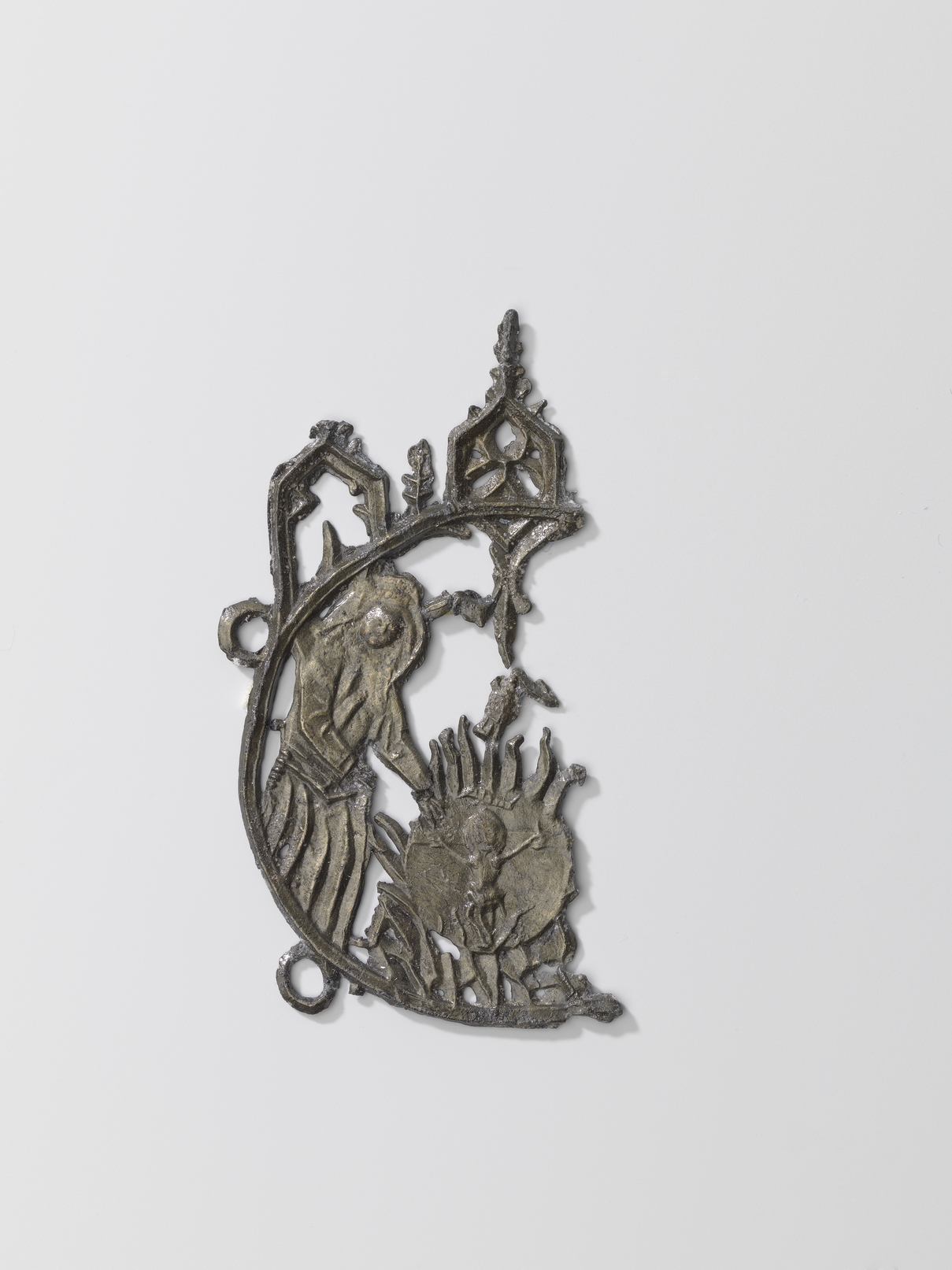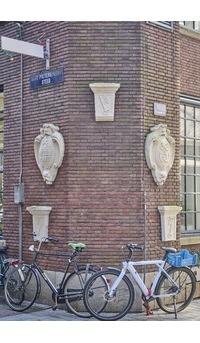On pilgrimage to the Heilige Stede
Location
Sint Pietersgasthuis
Nes 60
Historic building demolished
Type
Guest house
Religious community
Roman Catholic Church
Object
Medieval pilgrims' badge from St.-Pietersgasthuis
Maker and date
Maker unknown
1400-1475
Visit
The badge is located in the museum's depot.
In the Middle Ages, countless pilgrims traveled through Europe to visit holy places. Amsterdam was also an important place of pilgrimage, because a miracle occurred here in 1345. This miracle was called the Miracle of Amsterdam. A year after this event, a small chapel was built above the hearth in which an intact host was found. This ‘Kapel ter Heilige Stede’ was soon visited by thousands of pilgrims. They spent at least three days in the city. They slept in specially furnished dormitories, called ‘baaierds’ or in guesthouses. People of distinction also visited the Heilige Stede. Maximilian, the later Emperor of Austria, went on a pilgrimage to Amsterdam. He did so in gratitude for having been miraculously cured of his ailments, after he had promised to honor the holy place with a visit.
This incomplete pin, worn by a medieval pilgrim, is approximately six centimeters high and four centimeters wide. It was found on the site of the former St.-Pietersgasthuis, located between the Nes and the Rokin. It is made of tin and lead. Pilgrims buy such pins at the shrine they visit. They pin it on the wide brim of their hat, so that they are recognizable as a pilgrim. It is not only a souvenir of the long journey, as a ‘relic’ it mainly has a ‘healing’ and ‘evil-repelling’ effect. This Amsterdam example is unique; it is the only known pilgrim badge on which the Miracle is actually depicted.
In 1578, the Alteration takes place in Amsterdam. The city sides with the Protestant Prince of Orange. The Catholic city government is literally thrown out and replaced by a Protestant government. The result of this revolution is that the Catholics have to give up their churches, chapels and monasteries. And all public expressions of their faith come to an end, including the veneration of the Miracle of Amsterdam. The Kapel ter Heilige Stede passes into the hands of the Protestants and is renamed Nieuwezijds Kapel. Leonardus Marius (1558-1652), the pastor of the private and therefore catholic Begijnhof (Beguinage), quietly resumes the veneration when he takes office in 1631. This continues to this day. The annual Stille Omgang (Silent Procession), which has been held since 1880, first privately among friends and later in groups, is living proof of this. It is not without reason that the Begijnhof is called the second Heilige Stede.
Anouk Verhoeven
Student minor Religieus erfgoed in Amsterdam (Vrije Universiteit/Reinwardt Academie)
Suzette van 't Hof
Staff member Collection, Information, Research and Publication Amsterdam Museum
Last edited
March 07, 2025
Pilgrim badge of the Miracle of Amsterdam, maker unknown, dating 1400-1475, tin-lead alloy, 6 x 4 cm. Collection Amsterdam Museum. Photography Monique Vermeulen.
Exterior photo: Photography Robert Westera.
Koldeweij, J. en M. de Kroon, 'Vereeuwigd in tin en lood: Ontstaanswonderen op Pelgrimstekens', in C. Caspers, P. Nissen en P. Raedts (red), Heiligen en hun wonderen: uit de marge van ons erfgoed, van de late middeleeuwen tot heden. Budel: Uitgeverij Damon. 2007. 13-36.
Online sources
beschrijving Amsterdam Museum
Last visited 10-03-2025






